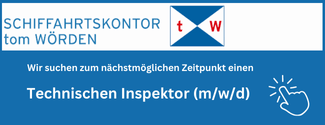A global rather than a regional approach: Shipowner organisation Bimco together with a number of partners is working on an industry standard for in-water cleaning with capture of ship hulls
In-water cleaning is only allowed in a few locations around the world and there is an increasing tendency for[ds_preview] coastal and port states to have rules, which at best allow in-water cleaning under certain circumstances and at worst prohibits it. In 2018, BIMCO therefore initiated the development of a standard that should be acceptable to relevant stakeholders and help improve the quality and safety of in-water cleaning. The working group consists of shipowners, cleaning companies, ports, paint manufacturers and international organizations.
The standard shall help ensure that the cleaning process is planned, safe and effective, the environmental impact is controlled, and properties of anti-fouling systems are preserved and that approval of in-water cleaners is internationally accepted. It introduces reference areas, which will serve as datum areas that are used for inspection and to measure the efficacy of the cleaning.
Three separate documents outline performance-based requirements for the in-water cleaning of a ship’s hull and niche areas with the capture of removed materials: Approval procedure for in-water cleaning companies, industry standard on in-water cleaning with capture and explanatory notes.
The cleaning system and the working procedures are tested and approved by an independent approval body in accordance with the Approval procedure. After approval, the quality systems of the cleaning company will be subject to internal audits and external audits carried out by the approval body. Ships, paint manufacturers and cleaning companies will use the requirements for planning, conducting, and reporting on the cleaning. For an approved cleaning company to operate in any given location, the port and other relevant authorities must issue a local permission.
Approval
It has been necessary to divide niche areas into different categories because the same piece of equipment cannot be used to clean all of them:
• Areas on the vertical side or the bottom of the ship that can be readily cleaned without using special equipment. On such areas, the equipment used is designed to clean large flat areas fast, which includes remotely operated vehicles (ROV’s) and divers.
•Propellers
• Niche areas that for example are built into the hull and/or have bends or corners have to be cleaned with special equipment. The approval process involves a test of the equipment and the certificate will specify which category or categories. This procedure contains the minimum requirements and test protocols for demonstrating compliance.
Cleaning companies will be tested for three different performance criteria based on their individual performance or manufacturers claims. The verification testing will take place on actual ship surfaces and anti-fouling coating system. Manufacturer’s and cleaning company’s specifications should include as a minimum biofouling type and extent, AFC type(s), categories of areas (hull, niche areas and/or propeller) and visibility and operational limits. Performance criteria for testing are limits to the type and extent of biofouling that the system is able to clean, capture and removal of material produced collected, impact to local water quality and inspections and planning of in-water cleaning.
Aron Frank Sørensen – Bimco















